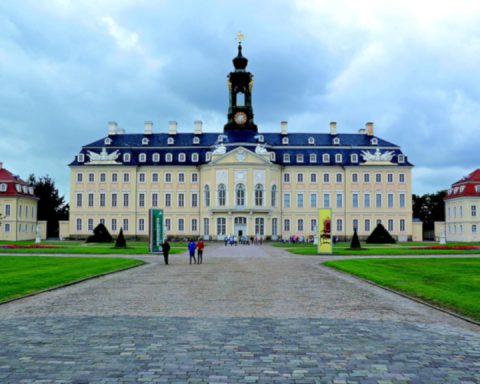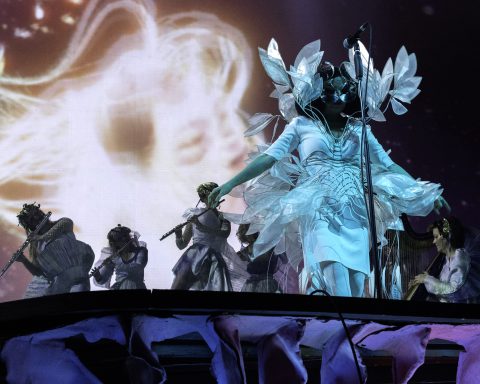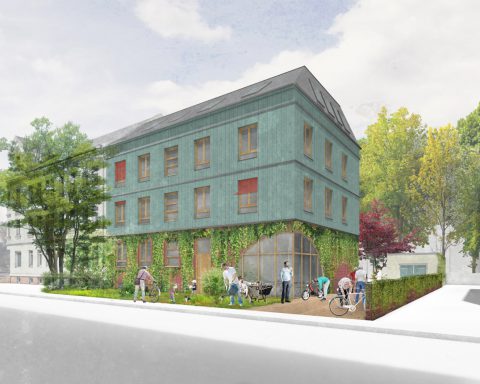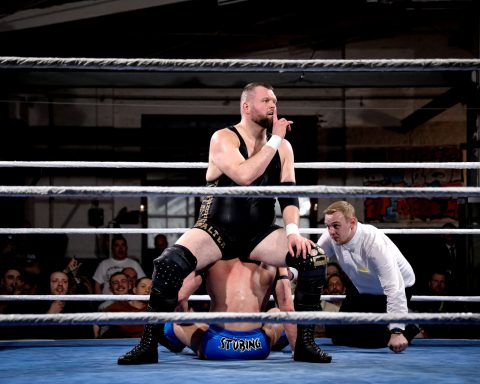As a second generation Canadian, returning to the country of my grandfather is filled with meaning and realization. At some point I plan on visiting the Bavarian town of Kulmbach, where he originates from, but I never expected Bavaria to visit me first.
On a bright autumn afternoon, I went over to the village of Klein Escherde to witness a spectacle alongside residents and folks from the neighboring villages. We lined the main street of the quaint village in Lower Saxony, and small talk ensued while waiting for the day’s festivities to begin.
Blue ribbons and streamers covered the streets, lampposts, and houses of the village. Blue and white checkered flags swayed and fluttered in the wind. However, the blue and white colors are representative of a different German state. A couple from the village brought this tradition from the Bavarian Alps to Klein Escherde, and it has taken place every September for the last 5 years or so.

I thought to myself, “Why is a cultural tradition from Bavaria taking place in Lower Saxony?”
An Oompah (a traditional Bavarian band) played music from afar, yet so dear to the hearts of many spectators. The crowd wore the same costumes as their entertainers for that day: the Bavarian traditional attire of Lederhosen and Dirndl blouses. The Oompah band consisted of brass instrument players, Goasslschnalzers (whip crackers), Schuhplattlers (knee dancers), Alphorn players, and men carrying cowbells.
The first thing the audience spotted is also the subject of the public gathering: a cow. However, this was not just any cow, but a wooden cut-out of a cow functioning as a Schnapps dispenser. Attendees enjoyed Schnapps from the dispenser which this hard-wood cow carried on its back.
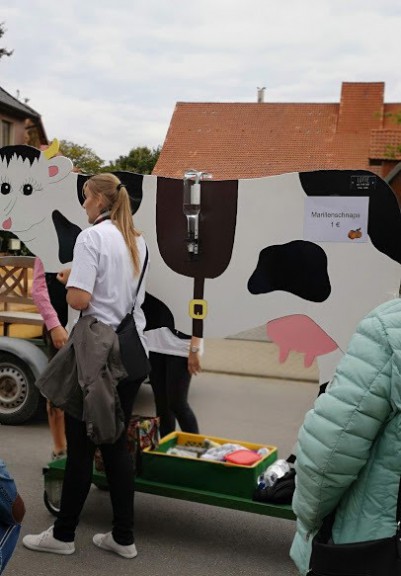
Ten real cows, guided by their handlers through the marriage of rope and elbow, fell into a domesticated march. People on either side of the cows created a barricade using wooden sticks. Meanwhile, people at the rear provided the physical motivation for the young calves when they refused to move. The parading of the cows provided a thrill every so often, when a young bull tried to break free of the line. I imagine, however, that the most damage caused would potentially be a spilled Schnapps.
I discovered that the name of this tradition in southwestern Bavaria is Viehscheid.
It is a popular celebration known as Almabtrieb in other regions. Unlike its adaptation in Klein Escherde, the original Viehscheid is historically deeply embedded in the landscape. The high hills provide fertile grazing for healthy lactation and for surviving the long winter. Upon the arrival of the cold season, the villagers bring the cows into the village. This is accompanied by celebrations to pay tribute to the relationship between cows and humans, which together provide dairy year-round.

Bavarians in the Alps region have celebrated their relationship to cows for over a century, with Viehscheid originating in the 1900s.
The first Viehscheid of the year happens on 9 September, with about 200 cows. In comparison, Klein Escherde has about ten cows, a relatively recent adoption by the village. The cows in the Bavarian Viehscheid wear cowbells to ward off evil spirits as they come down from the hills. The only spirits in the Klein Escherde version are in the metal udder of the wooden cow and the bellies of the Schnapps consumers. The Viehscheid ceremony traditionally kicks off a week of festivities, with the lead cows’ head-pieces designed by local artisans.
In Klein Escherde, the cows travel from their summer home in the hills to their winter home in the village. The fairgrounds are filled with Bavarian staples: beer tent, Bratwurst stand, musical stage, and of course something for the kids.
The growing popularity of Bavarian traditional festivals like Oktoberfest and Viehscheid is particularly interesting from an outsider’s perspective.
Oktoberfest, for one, draws many Germans and a global community of Oktoberfest-goers to Bavaria, especially to Munich. It is common for global Oktoberfest revelers to naively believe that it is representative of German culture.

“Oktoberfest is not German, it’s Bavarian!” Having made this error myself, I learnt of the annoyance of my German friends in Canada at having to explain it repeatedly. This common misconception may have had a knock-on effect with Germans who identify with these Bavarian traditions.
As a country with a complex sensitivity towards nationalism, it is clear why celebrating Bavarian traditions has become so widespread in Germany itself. I hosted a German exchange student in Canada and saw the number of Nazi jokes directed towards him, and even at me sometimes, for my German heritage. So I can understand why many Germans may want to associate with Oktoberfest – as a cultural tradition that is technically from Germany, and still considered cool internationally.
By Jordan Oelke
Jordan is a Canadian studying his Master’s in social anthropology at the University of Leipzig. He has been in Germany for about a year now. He has worked as a “Lifespeaker” in the exhibit Megalopolis – Voices from Kinshasa at the GRASSI museum, creating room for open discussion surrounding the exhibit and its artists.

